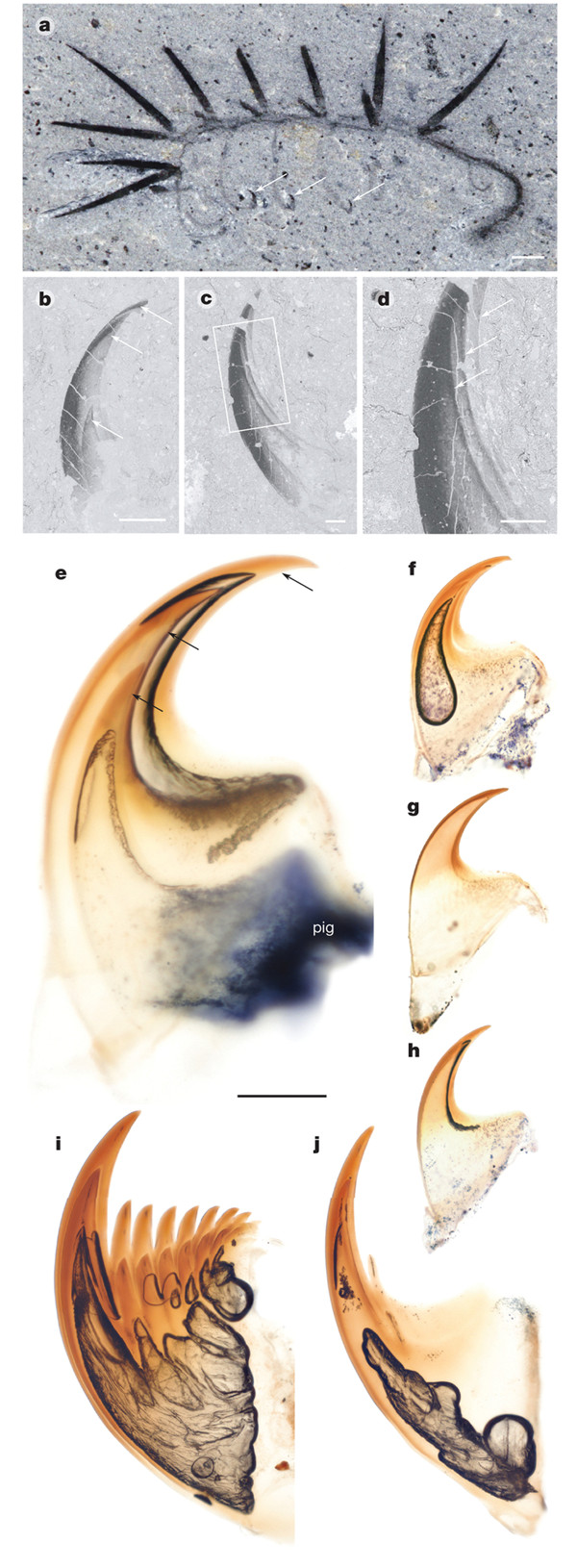
by Mary Caperton Morton Tuesday, December 9, 2014

A microscopic look at the claws of Hallucigenia and modern velvet worms links the two distant relatives. Credit: Royal Ontario Museum.
A fossil so bizarre that it was formally dubbed Hallucigenia has finally found a place in the evolutionary tree of early life. One of the more head-scratching fossils to come out of the famous 500-million-year-old Burgess Shale assemblage in British Columbia, the worm-like creature with legs, spikes and a head difficult to distinguish from its tail was originally drawn both backwards and upside down: The spines were originally thought to be legs, and its legs were thought to be tentacles.
Now redrawn in the correct orientation, Hallucigenia sparsa has been linked to modern velvet worms, also known as onychophorans, a relatively small group of worm-like animals that live in tropical forests. The key to the new description, published in Nature by co-authors Martin R. Smith and Javier Ortega-Hernández of the University of Cambridge, was a close look at the distantly related creatures’ claws, which share microscopic similarities.
Hallucigenia had long been suspected to be an ancestor of velvet worms, but definitive characteristics linking them together had been overlooked. “The peculiar claws of Hallucigenia were the smoking gun that solved this long and heated debate in evolutionary biology, and may even help to decipher other problematic Cambrian critters,” Smith said in a statement.
© 2008-2021. All rights reserved. Any copying, redistribution or retransmission of any of the contents of this service without the expressed written permission of the American Geosciences Institute is expressly prohibited. Click here for all copyright requests.